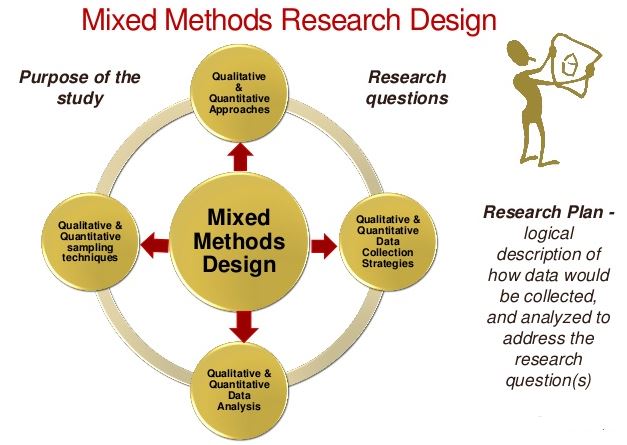The Mixed Method in Research Design
The mixed method approach to evaluating research data may be applicable to studies that are designed to gather both qualitative and quantitative information. This technique is often used in disciplines such as psychology, sociology or certain types of medicine. The continued development of these fields may depend on data that is derived from standardized scales or rating systems in addition to that gleaned from interviews, ‘focus group’ sessions and other similar tools. Therefore, the mixed method may be appropriate in a new project on a complex issue or situation that generates complex and highly individualized answers to research questions. Examples of these may include the societal impact of homelessness or the treatment of a lost or diminished sense. The data here may need to cover detailed and varied feedback (or ‘self-reports’) on the effect(s) of these target variables, as well as scores from formal quantitative tools typically used within the research community in question. One data type does not give a complete ‘picture’ of the outcome(s) without the other. Therefore, a methodology that incorporates both to analyse the data set as a whole is necessary.
The mixed method may combine and synthesize this data through a process called triangulation. This may involve the conversion of qualitative data into quantitative data. Such a form of triangulation is most applicable to data resulting from the administration of structured interviews or surveys, provided that data is sufficiently standard or homogeneous across respondents to be coded or scored effectively (i.e. without bias or other forms or statistical inadequacy). In this way, it may be converted to quantitative data, and compared or analysed in accordance with the requirements of the study design (e.g. subjected to a form of analysis such as a paired t-test). On the other hand, the qualitative data may be too individualized and/or complex to be coded. In this case, a thematic analytical technique may be used, incorporating findings such as significant differences among the quantitative data points as a theme or concept.

The aim of triangulation is the full integration of both data types to generate contiguous concepts or conclusions. This leads to another advantage of the mixed method: i.e. that it can address research aims that do not stem from standard null hypotheses. Questions, in other words, along the lines of ‘Does this novel treatment result in an improvement in the life quality of patients with hearing loss?’ rather than statements such as ‘This treatment improves hearing loss [in comparison to an existing alternative]’ to be confirmed or denied.
The mixed method is not, however, without disadvantages or detractors. Critics of this methodology often cite the risk of the ‘incompatibility paradox’; the probability that one data type will be inadequately analysed compared to the other. A prominent example of this risk is known as ‘pragmatism’, or the perception that researchers who use the mixed method value ‘experiential data’ (i.e. self-reports recorded from respondents) at the expense of quantitative data. The use of the mixed method may also be subject to preconceptions, judgement or other forms of observer bias that a researcher may impose on qualitative data in the course of its collection. These risks can be ameliorated, mainly through the skill and training of the individual researcher. Under these conditions, the mixed-method technique can be applied to generating full, comprehensive conclusions for non-standard research questions.
Click Here For Dissertation Help Guides
References
Brown RA, Kennedy DP, Tucker JS, Golinelli D, Wenzel SL. Monogamy on the Street: A Mixed Methods Study of Homeless Men. Journal of Mixed Methods Research. 2013;7(4):328-346
Windsor LC. Using Concept Mapping in Community-Based Participatory Research A Mixed Methods Approach. Journal of mixed methods research. 2013;7(3):274-293
Robson C. Real World Research. 2 ed. Oxford: Blackwell; 2002
Mertens DM, Hesse-Biber S. Triangulation and Mixed Methods Research: Provocative Positions. Journal of Mixed Methods Research. 2012;6(2):75-79
Lieber E, Weisner TS. Meeting the practical challenges of mixed methods research. SAGE handbook of mixed methods in social and behavioral research. 2010;2:559-579
We have a large collection of dissertation help guides that should be of interest to students and academics. If you enjoyed reading this post on the mixed method in research design, I would be very grateful if you could help spread this knowledge by emailing this post to a friend, or sharing it on Twitter or Facebook. Thank you.
